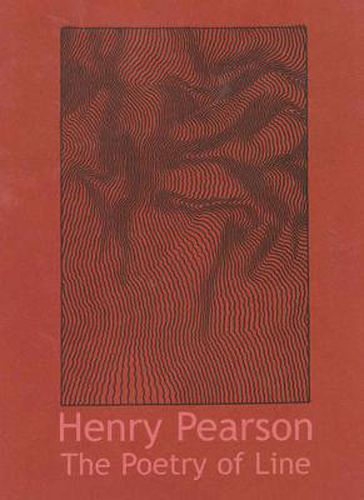Readings Newsletter
Become a Readings Member to make your shopping experience even easier.
Sign in or sign up for free!
You’re not far away from qualifying for FREE standard shipping within Australia
You’ve qualified for FREE standard shipping within Australia
The cart is loading…






Henry Pearson is often linked to the Op Art movement of the 1960s because his best-known paintings feature a labyrinth of undulating parallel lines. Yet his work, although included in the landmark exhibition of 1965, The Responsive Eye , has an intuitive rhythm and poetic elegance that falls well outside the calculated, often hard-edged sturctures favoured by most Op artists. World War II interupted Pearson’s first career in theatre design but led to a prolonged contact with Japanese culture and a passion for painting. Back in New York City, he studied at the Art Students League and, as early as 1959, began to develop drawings he had made during the war from secret Japanese survey maps. Gradually he transformed a topography of mountains and valleys into non-objective forms that reflected a personal vision and heralded a new era of linear abstraction in his work. This text accompanied an exhibition of Pearson’s drawings from 1959 to the mid-1970s, the years when the artist moved toward geometric abstraction.
$9.00 standard shipping within Australia
FREE standard shipping within Australia for orders over $100.00
Express & International shipping calculated at checkout
Henry Pearson is often linked to the Op Art movement of the 1960s because his best-known paintings feature a labyrinth of undulating parallel lines. Yet his work, although included in the landmark exhibition of 1965, The Responsive Eye , has an intuitive rhythm and poetic elegance that falls well outside the calculated, often hard-edged sturctures favoured by most Op artists. World War II interupted Pearson’s first career in theatre design but led to a prolonged contact with Japanese culture and a passion for painting. Back in New York City, he studied at the Art Students League and, as early as 1959, began to develop drawings he had made during the war from secret Japanese survey maps. Gradually he transformed a topography of mountains and valleys into non-objective forms that reflected a personal vision and heralded a new era of linear abstraction in his work. This text accompanied an exhibition of Pearson’s drawings from 1959 to the mid-1970s, the years when the artist moved toward geometric abstraction.